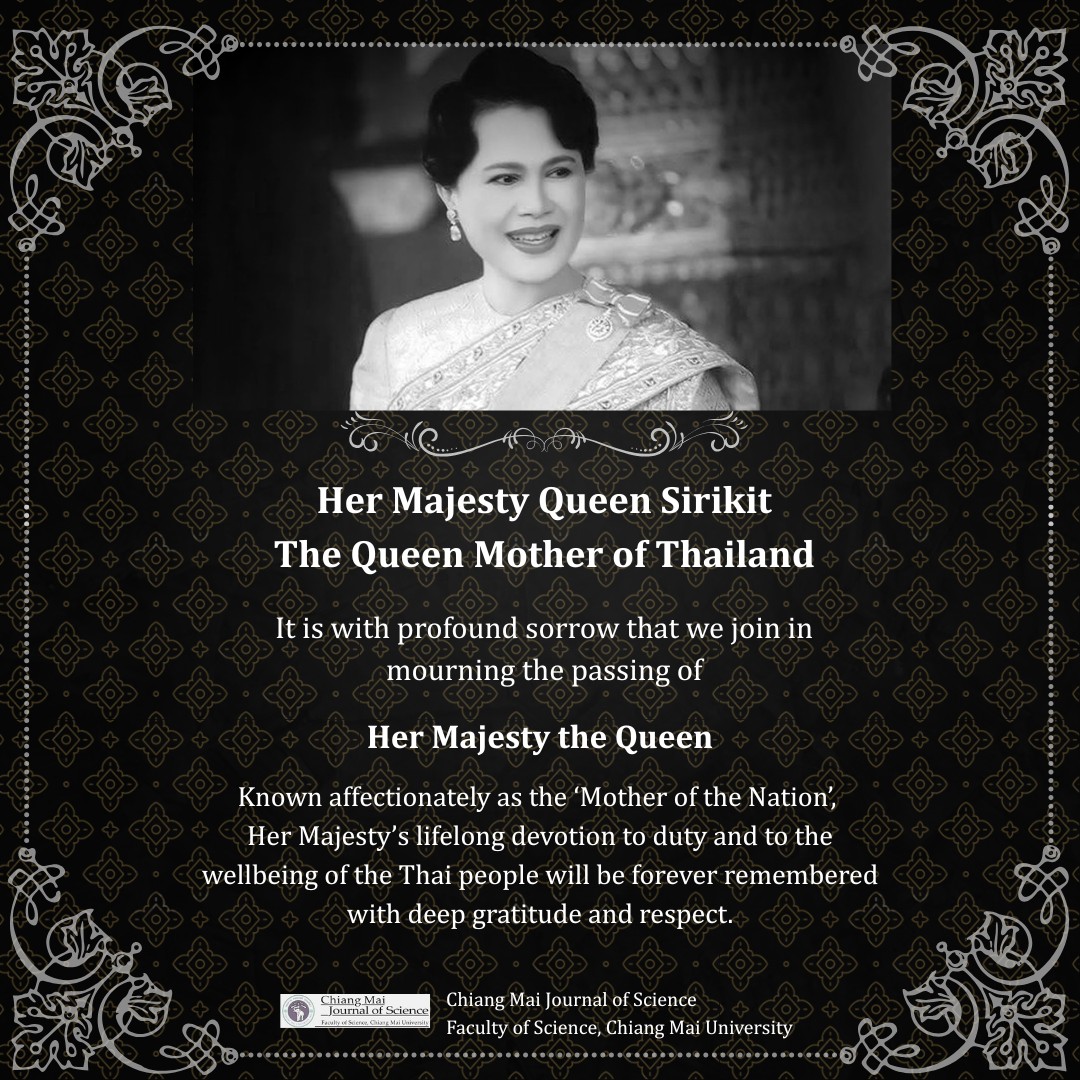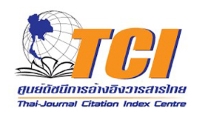JOURNAL DETAIL
Optimization of Melt-mixing Transesterification of Polylactide by Polyethylene Glycol Employing Response Surface Methodology
Paper Type |
Contributed Paper |
Title |
Optimization of Melt-mixing Transesterification of Polylactide by Polyethylene Glycol Employing Response Surface Methodology |
Author |
Narisara Jaikaew, Rafael Auras and Pakorn Opaprakasit |
Email |
pakorn@siit.tu.ac.th, aurasraf@msu.edu |
|
Abstract: A process for preparing polylactide-block-polyethylene glycol (PLA-b-PEG) copolymers has been developed and optimized by employing a transesterification reaction in a melt-mixing process. The reaction was carried out in a counter-rotating mixer unit, using polyethylene glycol (PEG) and tetrabutyl titanate (TBT) catalyst. The effects of PEG weight percentage, catalyst contents, temperatures, and rotor speeds on chemical structures of the resulting PLA-b-PEG were examined, in terms of number average molecular weight (Mn), weight average molecular weight (Mw), in-chain PEG contents (wt.% PEG), and specific mechanical energy (SME) imparted by the mixer. The process parameters were optimized using a central composite rotatable design (CCRD) response surface methodology (RSM). The CCRD was designed with four variables at three levels of variations (-1, 0, -1), four replicates center point, and a redundancy factor (α) of 2.000. The responses (Mn, Mw, wt.% PEG, and SME) from 28 experimental trials were analyzed by a multiple linear regression fitting, a second-order equation, and the RSM model. Mn and Mw of the products were determined by gel permeation chromatography (GPC). The in-chain PEG content was examined by nuclear magnetic resonance (1H-NMR) spectroscopy. The results show that the PEG weight percentage and the reaction temperature significantly affect (P< 0.05) Mw and Mn of the products, which are drastically decreased with an increase in the PEG weight percentage and temperature. A quadratic interaction is observed between the PEG weight percentage and temperature, indicating that high reaction temperature leads to lower PEG conversions, due to undesirable competing thermal-oxidative degradations of PEG in the presence of the catalyst. Optimum operating conditions on the PEG weight percentage, catalyst contents, temperatures, and rotor speed for obtaining high Mw with high wt.% PEG was identified. Although the optimal conditions are observed at the boundary level, the model serves as a platform for effective preparation of PLA-b- PEG copolymers with designed molecular weight and chemical structures. Further optimization of the model may be conducted by extending the range of independent factor levels. The resulting flexible PLA-b-PEG copolymers, with tunable structures and properties, have high potential for use as singlecomponent degradable bioplastics with excellent mechanical properties, plasticizers, or toughening agent for enhancing PLA’s toughness. |
|
Start & End Page |
69 - 80 |
Received Date |
2021-03-19 |
Revised Date |
2021-06-16 |
Accepted Date |
2021-07-19 |
Full Text |
Download |
File Supplemental |
Download Supplemental |
Keyword |
polylactide, polyethylene glycol, process optimization, toughening agent, transesterification |
Volume |
Vol.49 No.1 (Special Issue I : Jan 2022) |
DOI |
https://doi.org/10.12982/CMJS.2022.006 |
Citation |
Jaikaew N., Auras R. and Opaprakasit P., Optimization of Melt-mixing Transesterification of Polylactide by Polyethylene Glycol Employing Response Surface Methodology, Chiang Mai Journal of Science, 2022; 49(1): e2022006. DOI 10.12982/CMJS.2022.006. |
| View:1,792 Download:800 | |
RELATED ARTICLE
Article ID: e2024046
Author:Jutaporn Chanathaworn and Sommai Saramath
Vol.51 No.3 (May 2024) View: 760 Download:554
Article ID: e2023070
Author:Nur Afiqah Ali and Nozieana Khairuddin
Vol.50 No.6 (November 2023) View: 1,003 Download:1,043
page: 1332 - 1343
Author:Wilasinee Kingkam, Kewalee Nilgumhang, Sasikarn Nuchdang, Bheechanat Duangdee, Vichai Puripunyavanich and Dussadee Rattanaphra
Vol.49 No.5 (September 2022) View: 1,311 Download:788
page: 27 - 38
Author:Winita Punyodom, Puttinan Meepowpan, Boontharika Thapsukhon, Manita Dumklang and Wanich Limwanich
Vol.49 No.1 (Special Issue I : Jan 2022) View: 1,712 Download:579
page: 1381 - 1393
Author:Watcharin Rattanapong, Kulchanat Prasertsit and Chakrit Tongurai
Vol.48 No.5 (September 2021) View: 1,390 Download:541
page: 580 - 599
Author:Jakkrapong Jitjamnong*, Natthida Numwong, Narinphop Chuaykarn, Chatrawee Direksilp, Apanee Luengnaruemitchai, Napaphat Kongrit and Nonlapan Khantikulanon
Vol.48 No.2 (March 2021) View: 1,115 Download:193
page: 323 - 331
Author:Jirawan Jindakaew, Chalita Ratanatawanate, Takeshi Kikutani, and Pakorn Opaprakasit*
Vol.48 No.2 (March 2021) View: 1,638 Download:1,290
page: 484 - 498
Author:Jakkrapong Jitjamnong, Chachchaya Thunyaratchatanon, Apanee Luengnaruemitchai, Napaphat Kongrit, Naparat Kasetsomboon, Narinphop Chuaykarn and Nonlapan Khantikulanon
Vol.47 No.3 (May 2020) View: 1,035 Download:720
page: 987 - 1000
Author:Jakkrapong Jitjamnong*, Apanee Luengnaruemitchai, Napaphat Samanwonga and Narinphop Chuaykarn
Vol.46 No.5 (September 2019) View: 974 Download:436
page: 2438 - 2453
Author:Thanaphorn Rakkan, Nisa Paichid, Tewan Yunu, Sappasith Klomklao and Kanokphorn Sangkharak
Vol.45 No.6 (September 2018) View: 1,451 Download:421
page: 2059 - 2068
Author:Narisara Jaikaew, Atitsa Petchsuk and Pakorn Opaprakasit
Vol.45 No.5 (Special 2018) View: 1,330 Download:294
page: 1507 - 1518
Author:Tahir Mehmood*, Sadia Fareed, Mudassir Iqbal, Adeela Naseem and Faiza Siddique
Vol.45 No.3 (May 2018) View: 987 Download:284
page: 973 - 983
Author:Rattana Thaoklua, Jaroon Janjaroen and Karaked Tedsree*
Vol.45 No.2 (March 2018) View: 896 Download:400
page: 746 - 761
Author:Naruemon Rakchai, Aran H-Kittikun* and Wolfgang Zimmermann
Vol.45 No.2 (March 2018) View: 1,392 Download:255
page: 492 - 504
Author:Hossein Barani
Vol.45 No.1 (January 2018) View: 855 Download:585
page: 1431 - 1440
Author:Pacharawan Ratanasongtham, Lalida Shank, Jaroon Jakmunee, Ruangsri Watanesk and Surasak Watanesk*
Vol.44 No.4 (October 2017) View: 847 Download:234
page: 946 - 956
Author:Thawanrat Mingkwan, Jiraphong Suksiriworapong and Doungdaw Chantasart
Vol.42 No.4 (OCTOBER 2015) View: 942 Download:299
page: 201 - 207
Author:Manut Jaimasith and Satit Phiyanalinmat
Vol.34 No.2 (MAY 2007) View: 906 Download:269
page: 23 - 28
Author:Duangkamol Yujaroen, Artiwan Shotipruk, Motonobu Goto and Mitsuru Sasaki
Vol.35 No.1 (JANUARY 2008) View: 945 Download:269
Copyrights © Since 2021 All Rights Reserved by Chiang Mai Journal of Science










